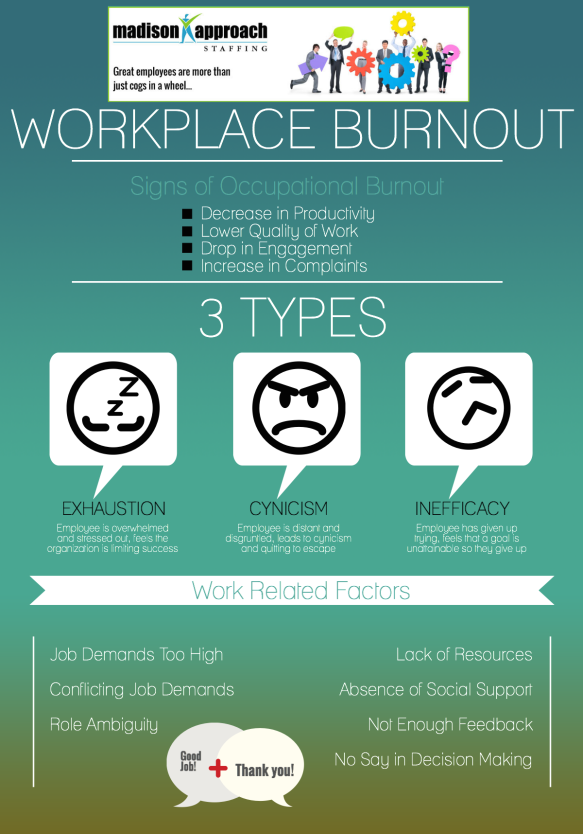This post is about businesses with 100 or more employees. To read more about businesses with up to 50 employees, read this post.
 ACA has created a complicated maze of regulations and requirements for businesses. Madison Approach Staffing is here to help you sort through your questions and support your company through the transition.
ACA has created a complicated maze of regulations and requirements for businesses. Madison Approach Staffing is here to help you sort through your questions and support your company through the transition.
Businesses with 100 or more full time employees will need to have their Affordable Care Act (ACA) ducks in a row by January 1, 2015 or face fines for non-compliance. After the business enrollment deadline was extended for a year, due to technical issues and delays of the SHOP (Small Business Health Options Program) exchanges, many business owners are scrambling to crunch numbers and understand their options going forward. These provisions apply to all large employers, including for-profit, non-profit, and government entity employers.
The Facts:
For Large Businesses, defined as more than 100 FTE (Full Time Equivalents) employees, the enrollment deadline is January 1, 2015. Under Employer Shared Responsibility provisions, large businesses can avoid penalties by offering minimum essential coverage (MEC) to full time employees and their dependents, including children under age 26. The offered coverage must include 3 specific guidelines: 70% of employees must be OFFERED an option for affordable insurance; the employee share of the healthcare premiums cannot exceed 9.5% of their salary; and this insurance must cover at least 60% of typical health care expenses for an average person. Remember, the employer must OFFER coverage, but there is no obligation under the legislation to PAY for coverage. Where it becomes tricky is complying with the affordability requirement.
Essential Health Benefits (EHB) vs. Minimum Essential Coverage (MEC) vs. Minimum Value Plan (MV):
Essential Health Benefits are defined as 10 core benefit categories including elements such as emergency services, hospitalization, mental health and other specific categories.
Despite the term, Minimum Essential Coverage does not have anything to do with the nature of the health benefits. MEC is defined as the source of the coverage and the eligible sources include:
- An employer sponsored plan
- A government sponsored plan
- A grandfathered plan
- A marketplace plan
Plans that do not count as MEC:
- Coverage only for vision care or dental care
- Workers’ compensation
- Coverage only for a specific disease or condition
- Plans that offer only discounts on medical services
Minimum Value refers to how much monetary coverage the plan provides. ACA requires that a health plan pay at least 60% of the cost of services provided under the plan. Find a MV calculator here.
What This All Means:
- MEC is the coverage that is required to satisfy both the Individual Mandate and the Employer Mandate.
- Many plans meet the MEC requirement for compliance with the Affordable Care Act and can be quite affordable too. But not all MEC plans meet the MV (60% actuarial value) requirements or the EHB requirements.
- Conversely, many of the plans that meet the MV and EHB requirements do not meet the affordability requirement (9.5% of household income).
Potential Penalties:
If no coverage is offered by the employer, the employer will be penalized $2,000 per year, multiplied by the number of full time employees, the first 30 full time employees are exempt.
If a MEC plan is offered, but doesn’t meet the affordability guidelines (9.5%) or the MV requirements and any full time employee receives a Premium Tax Credit through the Health Exchange, the business owner will be penalized $3,000 per full time employee certified to receive the tax credit. These penalties may increase if insurance premiums grow.
Two possible strategies to deal with the affordability issue are (1) the employer pay a flat dollar difference between the total plan cost and the employee contribution or (2) the employer contribution is a sliding scale based on employee wages and the ACA affordability criteria.
Infographic depicting the penalty maze
Additional Information
- By 2016 large businesses are required to offer these options to 95% of their full-time workforce.
- IRS returns will have to include documentation of benefits provided throughout the year to employees.
- Business owners must provide employees with a “Summary of Benefits and Coverage” form to help employees better understand their insurance plans.
- The maximum amount an employee may elect to contribute to health care flexible spending arrangements (FSAs) for any year will be capped at $2,500, subject to cost-of-living adjustments. Note that the limit only applies to elective employee contributions and does not extend to employer contributions.
- Individuals who are eligible for employer-provided healthcare cannot be made to wait longer than 90 days to be enrolled.
- If two or more companies have a common owner or are otherwise related they may be treated as a single employer
Information Reporting
Beginning in 2015, business owners with 51 to 99 FTE employees will be required to report information about their provided health coverage even though they are not required to provide coverage until 2016. The first of these reports must be filed in 2016. More information about this reporting can be found here.
Sources to Educate Yourself Further
For questions about specific details that circumstances that may apply to your business, the United States Department of Labor has provided a Frequently Asked Questions landing page about Affordable Care Act implementation, http://www.dol.gov/ebsa/healthreform/regulations/acaimplementationfaqs.html
For a complete overview of the key provisions under the Affordable Care Act for large businesses, head over to The US Small Business Administration website, http://www.sba.gov/content/employers-50-or-more-employees
For a schedule of webinars provided by The US Small Business Administration, go to http://www.sba.gov/healthcare. These webinars cover the important points for different sized businesses, and have a question and answer portion at the end. The webinars are also available in English and Spanish.
 Younger generations are less likely to build a life-long career at one company, and so they value career development and personal growth.
Younger generations are less likely to build a life-long career at one company, and so they value career development and personal growth. 





